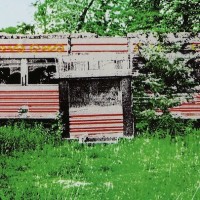“I Can’t Go For That (No Can Do)” is remembered as Hall and Oates’ fourth No. 1 single, topping the Billboard charts into January 1982. The song also crossed over to the top the R&B charts, as well as a the dance charts. (Well, and for a deeper meaning that many would never have guessed. But that’s another story.)
Its simple origins, however, didn’t point to such lofty achievements. “I Can’t Go For That” began with Daryl Hall and John Oates, with nothing more than a primitive drum machine, with only a snippet of a concept. Still, they quickly realized that something magical was happening.
“We had been doing a recording session and we had recorded all day into the evening, and all of the band guys had left,” Oates tells Matt Wake of AL.com. “It was just Daryl, myself and the engineer in the studio, just kind of cleaning up a few things, and Daryl had this idea. He went and sat at this keyboard, and we had this little rhythm machine called a Roland CompuRhythm, which was an early version of a drum machine. We used it just for tempos and things like that.”
A basic rhythm track from the Roland became a leaping-off point. “It happened to be on this particular beat,” Oates adds, “and [Daryl] just started playing the left-hand bass line of that song, and he said, ‘Hey, man, get your guitar. I think I’ve got something here.'”
Oates completed their initial work with a dark, plucky riff. The next day, Hall and Oates added Charlie DeChant’s slithering sax, a little more synth (it was the 1980s, after all) and some background vocals to the roomy groove found on the demo — and a song that would eventually be played more than one million times on the radio, as certified by BMI, was born.
“I think that’s one of the things about it: It’s so simple, and there’s so much space in it,” Oates says. “That’s what made it so funky.”
- Ernesto Cervini’s Turboprop, “When I Fall” (2024): Video premiere - March 15, 2024
- Disaster Pony,“Dead Neon & The Noon Sun” from ‘Disaster Pony’ (2024): Video premiere - February 27, 2024
- Christopher Hoffman, “Farewell Forever” from ‘Vision Is The Identity’ (2024): Streaming premiere - February 19, 2024


